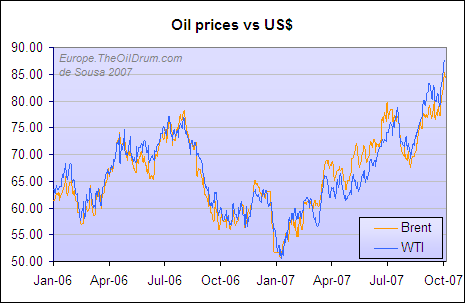WSJ Friday Nov 2,2007 B1
Chrysler said it was eliminating up to 11,000 jobs – or 14 per cent of its workforce – as it cuts shifts at several North American assembly and engine plants to match a slimmed-down vehicle lineup and slower-than-expected US demand for cars.
The cuts at the carmaker come on top of 13,000 job losses announced in February under Chrysler’s three-year Recovery and Transformation Plan. They mark the first big restructuring announcement by Chrysler’s new management team since buyout group Cerberus Capital management bought the lossmaking company from Germany’s Daimler in August.
Chrysler this week said it was eliminating four slow-selling vehicles – the Crossfire sports car, PT Cruiser Convertible and Pacifica crossover, and Dodge Magnum station wagon from its lineup.
It has revised downward its forecast for total US vehicle sales from 17.2 m in February to 16m to 16.5m this year as demand for new cars slows.
Chrysler said it was eliminating shifts at five North American assembly plants which, combined with other “volume-related manufacturing actions,” would lead to a reduction of 8,500 to 10,000 blue-collar jobs through 2008.
The automaker also said it planned to reduce salaried workers by 1,000 and contract workers by 37 per cent, in addition to slashing overtime hours and reducing purchased services due to reduced volume.
Its current workforce totals about 77,000.
“We have to move now to adjust the way our company looks and acts to reflect a smaller market,” said Tom LaSorda, Chrysler’s vice-chairman and president. “That means a cost base that is right-sized and an appropriate level of plant utilisation.”
The shift cuts will affect Chrysler’s assembly plants in Belvidere, Illinois; Toledo, Ohio; and Brampton, Ontario, and its Sterling Heights and Jefferson North plants in Michigan, the company said.
Chrysler plans further reduction at engine, stamping and other plants which it has not yet identified, the company said.
The carmaker is currently reviewing its product and marketing plans, and in recently concluded contract talks with the United Auto Workers union it committed to spend more than $15bn on products, plants and engineering through 2011.
Following Chrysler’s and General Motors’ agreement of four-year contracts with the UAW, Ford Motor is now negotiating with the union on its own agreement, which may see further job cuts announced at the rival carmaker.



